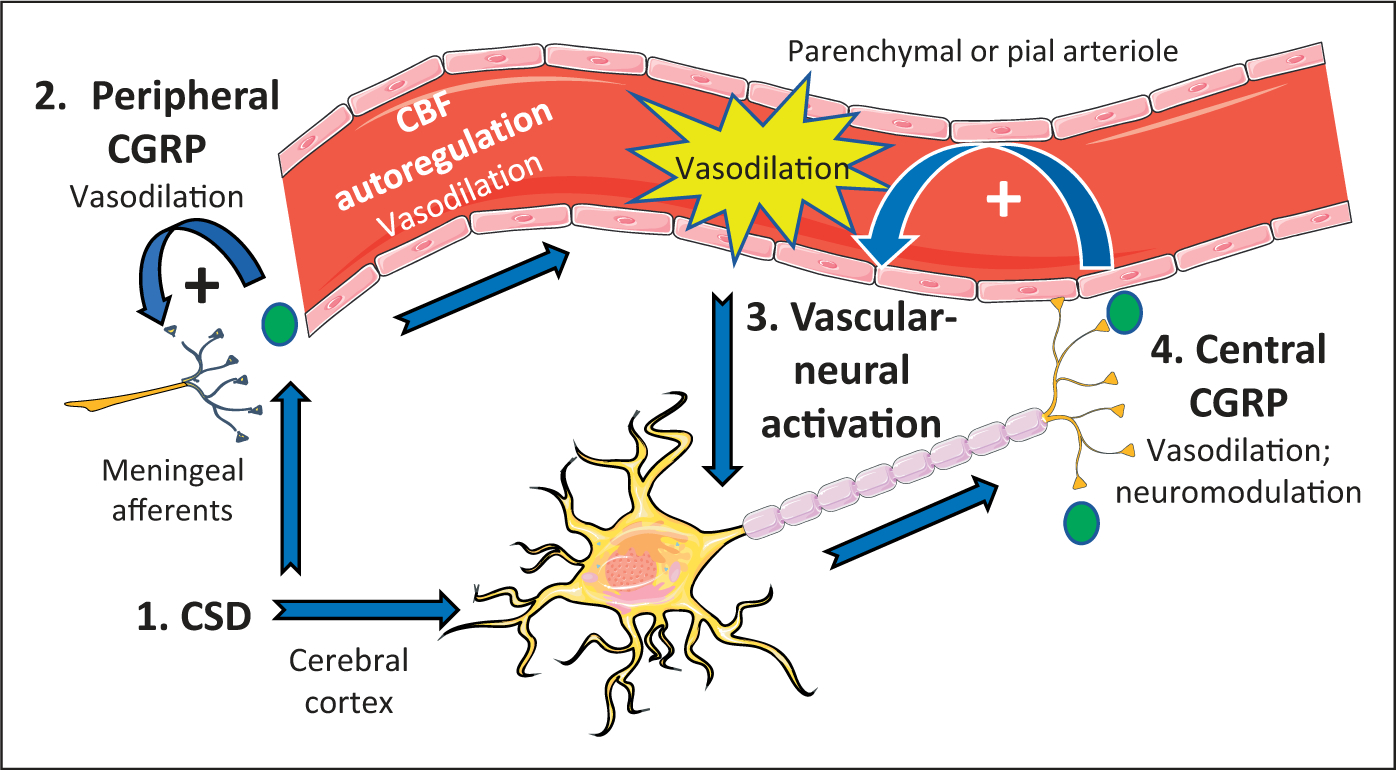Figure 1.

Model of CGRP at the intersection of vascular-neural communication. The steps involved in this bidirectional communication are organized from 1 to 4. Step 1: CSD activates meningeal afferents of the trigeminal nerve and multiple CSD events can increase central CGRP mRNA and peptide release in the cerebral cortex. Step 2: Peripheral CGRP released from trigeminal afferents causes vasodilation and alters the trigeminovascular microenvironment, resulting in more CGRP release. This positive feedback loop would prolong the local vasodilation of meningeal vessels, including pial arterioles, which leads to reflex autoregulation of cerebral blood flow (CBF). This further dilates arterioles in the pia and brain parenchyma. Step 3: Increased flow in parenchymal vessels transmits a signal resulting in increased neuronal firing rates by vascular-neural coupling, as observed in cortical slices. Step 4: Release of central CGRP from cortical neurons acts as a neuromodulator to increase synaptic signaling and causes further vasodilation of parenchymal arterioles. The vasodilation would potentially create a self-sustaining positive feedback loop through vascular-neural activation to maintain increased neural activity and CGRP release. CGRP is represented by the green circles.
